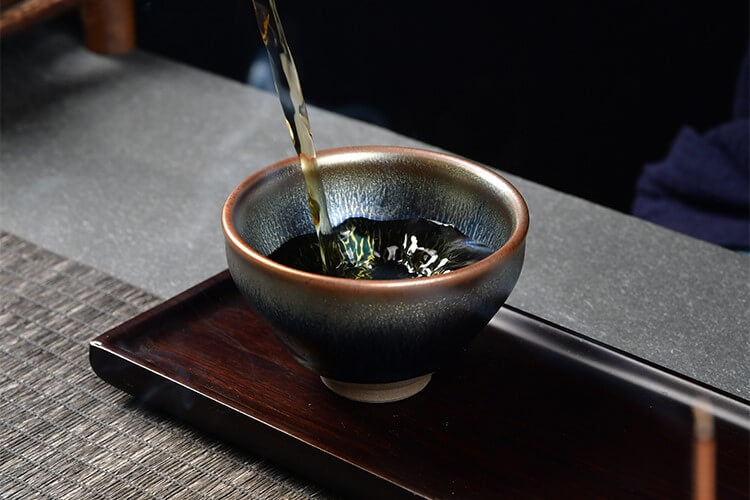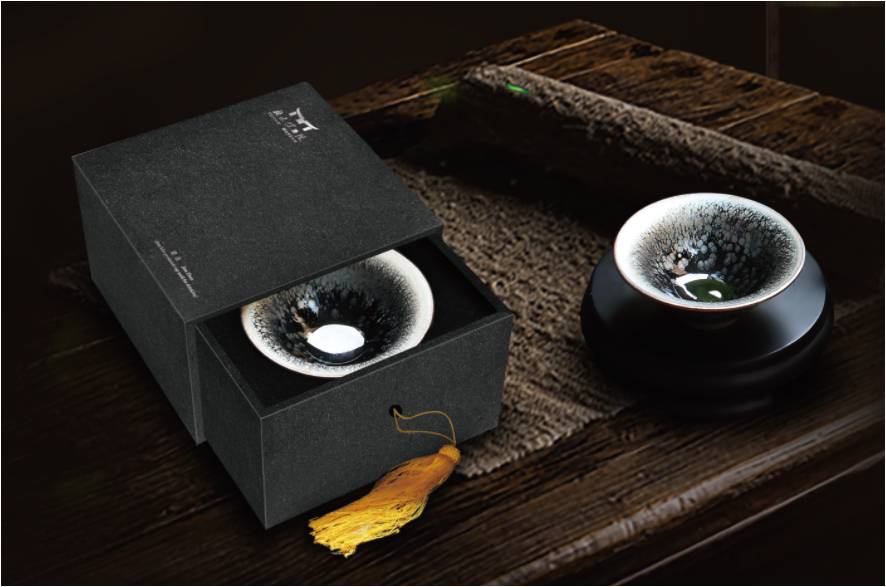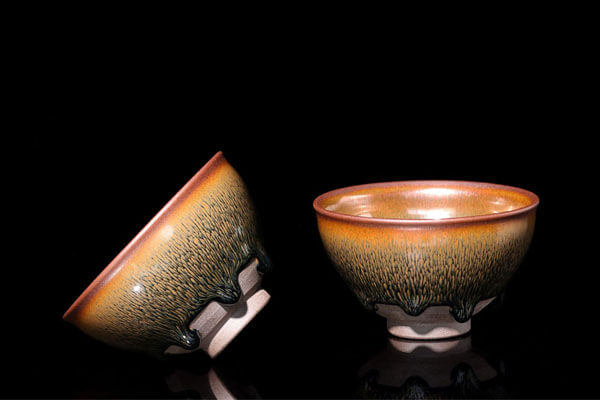The Art of Jian Zhan: A Guide to Song Dynasty Tea Culture

The Song Dynasty (960–1279 CE) is often celebrated as a golden age of Chinese aesthetics, where art, philosophy, and daily life intertwined. Among its many cultural treasures, Jian Zhan tea bowls stand out as iconic symbols of refinement and technical mastery. These enigmatic black-glazed vessels were not just tools for drinking tea but canvases for nature’s own artistry. In this guide, we explore the history, craftsmanship, and enduring legacy of Jian Zhan, offering a window into the sophistication of Song Dynasty tea culture.
The Origins of Jian Zhan: A Fusion of Utility and Beauty
Jian Zhan (建盏), meaning “Jian ware teacup,” originated in the kilns of Jianyang, Fujian Province, during the Tang Dynasty. However, it was during the Song era that these bowls reached their zenith, driven by the imperial court’s obsession with tea competitions (dian cha). Participants whisked powdered tea into frothy emulsions, and the dark interiors of Jian Zhan bowls provided the perfect contrast to judge the tea’s vivid hue and silky texture.
The popularity of Jian Zhan was immortalized in texts like Cai Xiang’s Record of Tea (《茶录》), which praised their ability to enhance the tea’s flavor and visual appeal. As Song Dynasty tea culture evolved, Jian Zhan became a status symbol, coveted by scholars, monks, and emperors alike.
The Alchemy of Jian Zhan: Crafting Nature’s Masterpiece
The magic of Jian Zhan lies in its iron-rich clay glaze, a blend of local clay and mineral oxides that transforms unpredictably in the kiln. Artisans faced immense challenges: the bowls were fired at temperatures exceeding 1,300°C in oxygen-reduced environments, a process that triggered mesmerizing glaze crystallization.
Key styles emerged from this alchemy:
-
Hare’s Fur Jian Zhan (tuhao): Delicate streaks resembling animal fur, created by iron oxide streaks.
-
Oil Spot Jian Zhan (yóu dī): Metallic speckles that shimmer like droplets on water.
-
Yohen Jian Zhan: Rare “iridescent” variants with kaleidoscopic hues, prized by collectors today.
Each bowl was unique, embodying the Daoist principle of ziran (“natural spontaneity”). Modern scientists attribute these patterns to iron crystals self-organizing under extreme heat—a testament to the ancient ceramic techniques still revered in Fujian’s workshops.
How to Use Jian Zhan: A Ritual Reborn
To fully appreciate Jian Zhan, one must engage with it as Song literati did. Here’s how:
-
Season the Bowl: Rinse it with hot tea to awaken its porous glaze and deepen its patina over time.
-
Whisk Matcha: Use a bamboo chasen to froth high-quality powdered tea, echoing the Song Dynasty tea ceremonies.
-
Savor the Contrast: The black glaze intensifies the tea’s jade-green color, while the thick clay retains heat, mellowing bitterness.
Today, Jian Zhan isn’t limited to matcha. Pu-erh, oolong, and even coffee enthusiasts cherish its ability to enhance aroma and mouthfeel—proof of its timeless versatility.
Jian Zhan’s Modern Revival: Bridging Past and Present
For centuries, Jian Zhan’s secrets were nearly lost, overshadowed by imperial porcelain. Yet, since the 1980s, artisans like Li Da and Xiong Zhonggui have revived its legacy, using traditional dragon kilns and recipes. In 2017, Fujian’s Jian Zhan techniques were added to China’s Intangible Cultural Heritage list, sparking global demand.
Collectors now seek both antique Jian Zhan bowls and contemporary pieces, drawn to their organic beauty and historical resonance. For tea lovers, owning a Jian Zhan is more than an aesthetic choice—it’s a connection to the philosophical depth of Song Dynasty tea culture.
Why Jian Zhan Endures: A Symbol of Harmony
Jian Zhan embodies the Song ethos of jian dan ji zhen (“simplicity reveals truth”). Its unassuming form and radiant glaze mirror the era’s pursuit of harmony between humanity and nature. Whether displayed as art or used daily, these bowls invite us to slow down and appreciate the fleeting beauty of a tea’s froth—or the stars captured in their glaze.
For those exploring Chinese tea accessories or traditional ceramic art, Jian Zhan offers a tangible link to a culture that elevated tea drinking into meditation. As you hold one, consider the kiln’s flames, the artisan’s patience, and the countless tea drinkers who, over 1,000 years, found wonder in the same cup.






